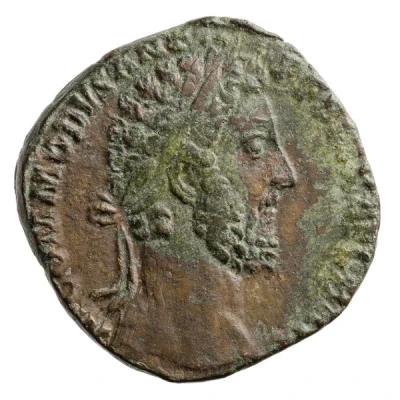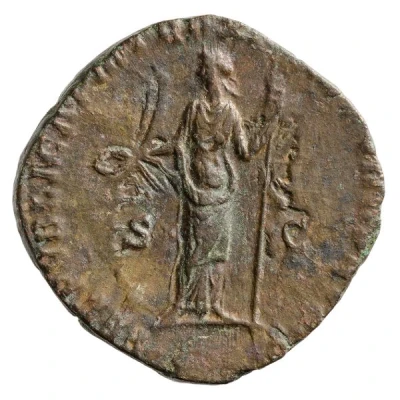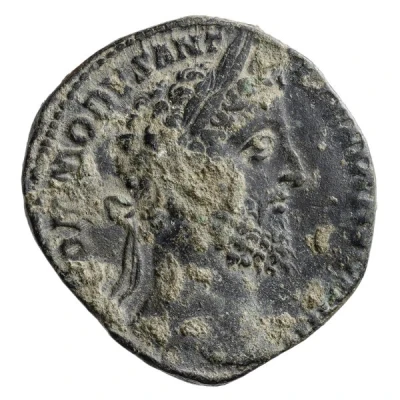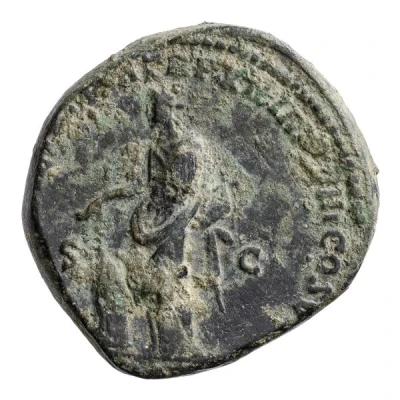


© Münzkabinett der Universität Göttingen (CC BY-NC 4.0 DE)
Sestertius - Commodus FEL PVBLICA P M TR P XII IMP VIII COS V P P S C; Felicitas
| Bronze | 22.3 g | 28.5 mm |
| Issuer | Rome › Roman Empire (27 BC - 395 AD) |
|---|---|
| Emperor | Commodus (Lucius Aurelius Commodus) (177-192) |
| Type | Standard circulation coin |
| Years | 186-187 |
| Value | 1 Sestertius = ¼ Denarius |
| Currency | Denarius, Reform of Augustus (27 BC – AD 215) |
| Composition | Bronze |
| Weight | 22.3 g |
| Diameter | 28.5 mm |
| Shape | Round (irregular) |
| Technique | Hammered |
| Demonetized | Yes |
| Updated | 2024-10-06 |
| Numista | N#265880 |
|---|---|
| Rarity index | 100% |
Reverse
Felicitas, draped, standing left, holding patera in right hand and sceptre in left hand.
Script: Latin
Lettering: FEL PVBLICA P M TR P XII IMP VIII COS V P P S C
Translation:
Felicitas Publica. Pontifex Maximus, Tribunicia Potestate Duoecima, Imperator Octavum, Consul Quintum, Pater Patriae. Senatus Consultum.
The good fortune of the public, high priest, holder of tribunician power for the twelfth time, supreme commander (Imperator) for the eighth time, consul for the fifth time, father of the nation, Decree of the senate.
Comment
Mass varies: 17.114–27.48 g;Example of this type:
Münzkabinett der Universität Göttingen
Source:
Online Coins of the Roman Empire (OCRE)
Interesting fact
One interesting fact about this coin is that it features an image of the Roman goddess Felicitas, which means "good luck" or "happiness" in Latin, on its reverse side. This suggests that the coin was minted during a time when the Roman Empire was seeking to promote feelings of prosperity and good fortune among its citizens. Additionally, the coin's design, which includes a depiction of Commodus, the Roman emperor at the time, and the phrase "Felicitas," may have been intended to reinforce the idea that the emperor's rule was bringing happiness and prosperity to the empire.

